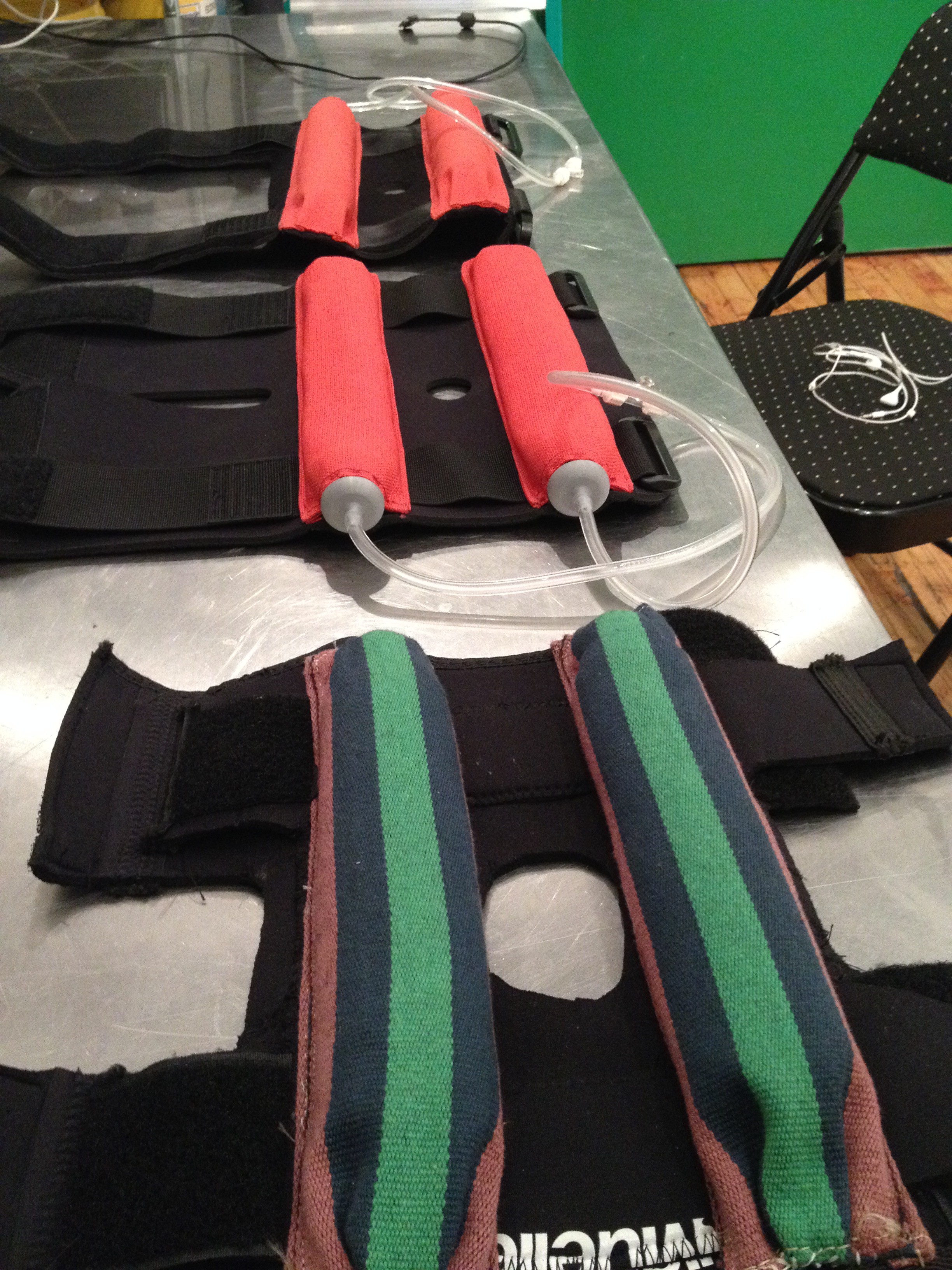The Neucuff has been a concept for roughly a year. While I was making the Glaucus I tried to imagine where soft robotics could go to offer tangible benefits to peoples' lives. I was able to bend the ears of a few doctors and medical device developers asking what persistent problems in therapy and rehabilitation might find some solutions in the soft robotics field. Cerebral Palsy kept cropping up and I began research and development in earnest.
The first prototype was hacked together from a pair of off-the-shelf athletic elbow braces. Kari Love (who also designs broadway costumes and spacesuits) designed and fabricated the cloth elements, and I provided the silicone bladders.
The original design used two layers of stretchy neoprene to try and offer a two-step tightening process to make securing the exoskeleton easy for people dealing with motor problems. However, we quickly found that the straightening action of the actuators could stretch the elastic and reduce the amount of force going into straightening the elbow. My first go at high pressure fasteners also proved less than successful when we popped one out of its seat with a small hand pump.
Those problems were eliminated in the second version, which was laser cut from hook and loop backed neoprene and cordura. Kari designed the flat patterns and laser cut the neoprene and cordura elements. The air fasteners were changed out for the version shown in a previous update. These have proven pretty durable - standing up to pressures of 30psi and above. Again we attempted a two-stage donning process where the exoskeleton would be folded over and velcro'd to itself before being secured with nylon webbing. This time the donning process simply proved too complex and we moved on to another prototype.
The current Neucuff is made from the same materials and includes a pair of laser cut .25" delrin loops for threading velcro straps. The donning action (seen here) is much simpler. It's also a very secure design that doesn't slip off the arm or loosen over time. This design has enough fidelity to truly evaluate how this kind of device would perform in the field. We've learned that the pressure from the actuators needs to be distributed in such a way as to avoid constricting the inner diameter of the cuff at peak pressure. The force from the straps also needs to be distributed over a wider area with more padding. It's tough to have put in so much work only to poke holes in the latest prototype and go back to the drawing board, but there's no other way to solve tough problems like this. You just keep redesigning and knocking down problems until you reach a model that stands up to a rigorous evaluation.
For the next versions I'm planning on switching tracks to heat sealed prototypes and am excited to see what comes out of it.
 Matthew Borgatti
Matthew Borgatti
Discussions
Become a Hackaday.io Member
Create an account to leave a comment. Already have an account? Log In.